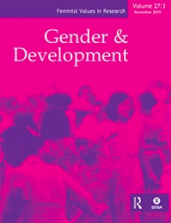Women and wars: some trajectories towards a feminist peace

Overview
This paper seeks to explode a number of myths about women’s absence from wars and conflict; it considers some problems about their vulnerabilities in these circumstances; and offers some feminist perspectives for addressing these problems. The paper considers the conflicting demands made on women in periods of war and revolution, and argues that differing historical processes result in different post-conflict policies towards women. There is, however, a commonality of experiences that universally marginalise women in the post-conflict and reconstruction phases. Even when women have participated actively in wars and revolutions, they are heavily pressured to go back to the home and reconstruct the private domain to assert the return of peace and ‘normality’. This paper contends that the insistence on locating women within the domestic sphere in the post-war era may be counter-productive and located in the historical construction of nationhood and nationalism as masculine in terms of its character and demands. With the dawn of the twenty-first century and the long history of women’s participation in wars, revolutions, and policy making, it may now be possible to use the symbolic importance given to them in times of conflict to articulate a different perception of nationhood and belonging, and to create a more cooperative and less competitive and hierarchical approach to politics and the reconstruction of nations and their sense of belonging.
Additional details
Author(s)
How to cite this resource
Citation styles vary so we recommend you check what is appropriate for your context. You may choose to cite Oxfam resources as follows:
Author(s)/Editor(s). (Year of publication). Title and sub-title. Place of publication: name of publisher. DOI (where available). URL
Our FAQs page has some examples of this approach.
Take the Guns Away: Afghan voices on security and elections

Influencing Behaviours and Practices to Tackle Poverty and Injustice


